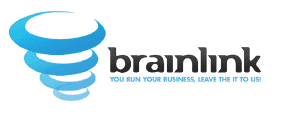Overview
A public–private team featuring The Community Preservation Corp., Shelter Rock Builders, and NYC’s Department of Housing Preservation and Development has completed 31 new affordable homes across Bedford‑Stuyvesant North & Central, with a second phase set to add 76 more units. Beyond a headline, this is a practical signal for New York City’s commercial construction market: funding is moving, standards are rising, and documentation expectations are tightening.
Why This Matters for Construction Leaders
Affordable housing has shifted from political talking point to pipeline driver. For contractors and developers, that means:
• Funding momentum: More dollars are flowing to mixed‑tenure, affordable projects
• Regulatory nuance: City incentives and HPD oversight require precise documentation
• Performance tracking: Every cost, invoice, and compliance artifact must reconcile cleanly in your accounting stack (including Sage 300 CRE)
Market Dynamics You’ll Feel on the Job
• Design and sustainability: Affordable no longer means basic—expect higher design standards, energy‑efficiency mandates, and green certifications
• Mixed delivery: For‑sale plus rental mixes demand adaptable build approaches and financing coordination
• Partnership complexity: Joint ventures introduce milestone gating, shared reporting, and tighter audit trails
• Supply and labor: Multi‑phase housing can pull materials and skilled trades, challenging lead times and wage assumptions
• Permitting and inspections: HPD and related agencies are raising the bar on documentation, occupancy, and maintenance reporting
Opportunities You Can Seize
• Pipeline stability: Less reliance on volatile office or luxury segments
• Reputation building: On‑time, on‑budget delivery in affordable housing is becoming a calling card for NYC’s top GCs
• Bid readiness: Firms that master compliance, cost visibility, and transparent reporting will queue up for future phases
Pain Points to Anticipate
• Change orders and delays: Public funding means more eyes—and slower approval cycles if your paperwork isn’t airtight
• Cost capture: Thin margins punish missed hours and hidden vendor overruns; field reporting must sync seamlessly with accounting
• Compliance drift: Falling behind on evolving city requirements can stall drawdowns and throttle cash flow
Action Checklist for Bid‑Ready Execution
• Structured collaboration: Digitize JV workflows; eliminate orphaned invoices and unsigned change orders
• Field‑to‑office integration: Capture labor, materials, and daily logs once; push clean data to Sage 300 CRE and reporting packs
• Forecasts on cadence: Weekly labor/material forecasts tied to schedule and procurement realities
• Compliance kits: Standardize HPD/agency documentation, submittals, and closeout packages
• Cost governance: Enforce budget controls, commitment tracking, and WIP visibility across teams
• Scalable IT: Right‑size construction technology to handle multi‑phase data volumes, audits, and partner oversight
Final Take
Diesel and boots still matter—but so does total project visibility. As NYC accelerates affordable housing, the winners will combine execution in the field with disciplined systems in the back office. If you plan to serve this segment, harden your processes now so you’re not at the bottom of the bid pile when the next phase drops.
Source
REBusinessOnline — Partnership Completes 31‑Unit Affordable Housing Project in Brooklyn: https://rebusinessonline.com/partnership-completes-31-unit-affordable-housing-project-in-brooklyn/









